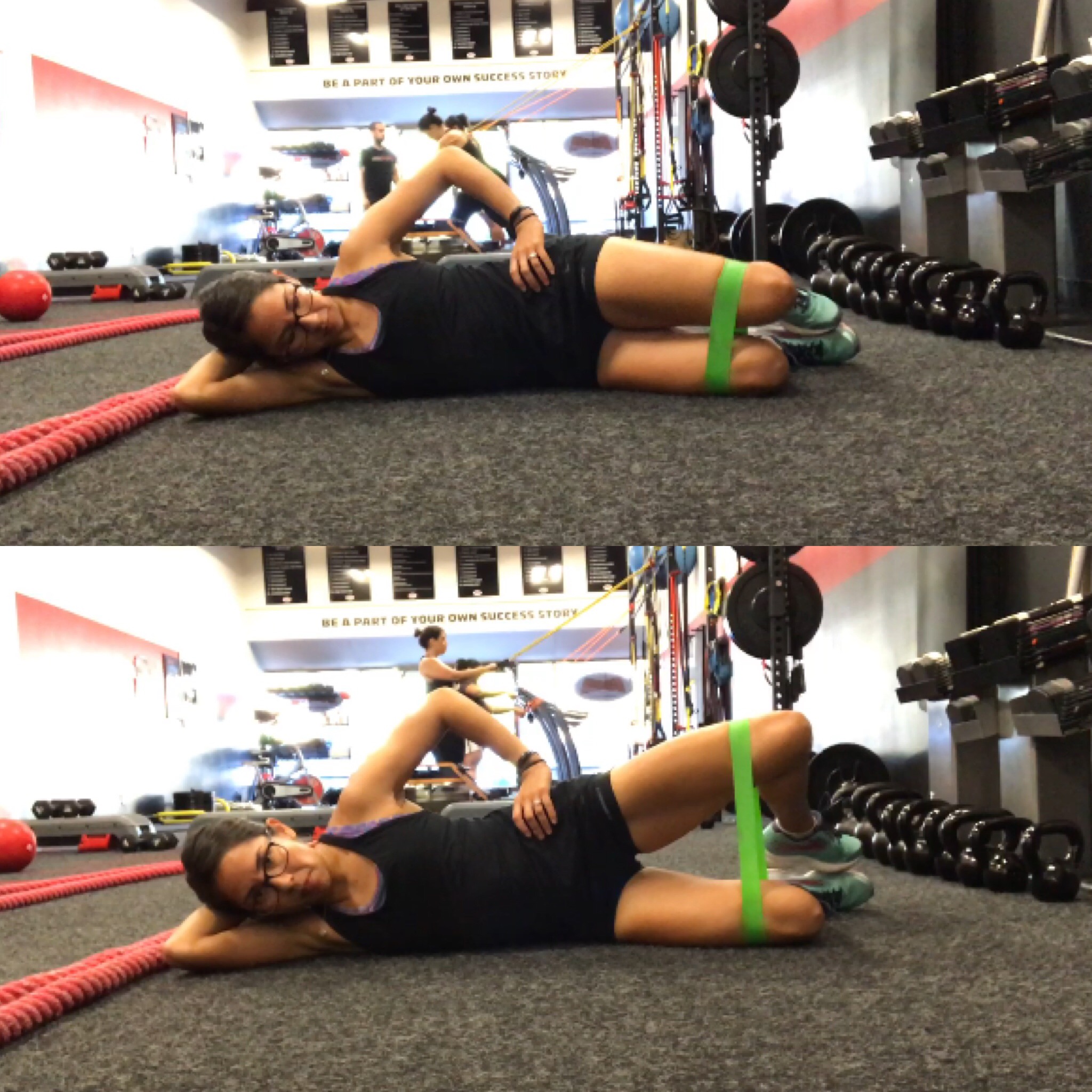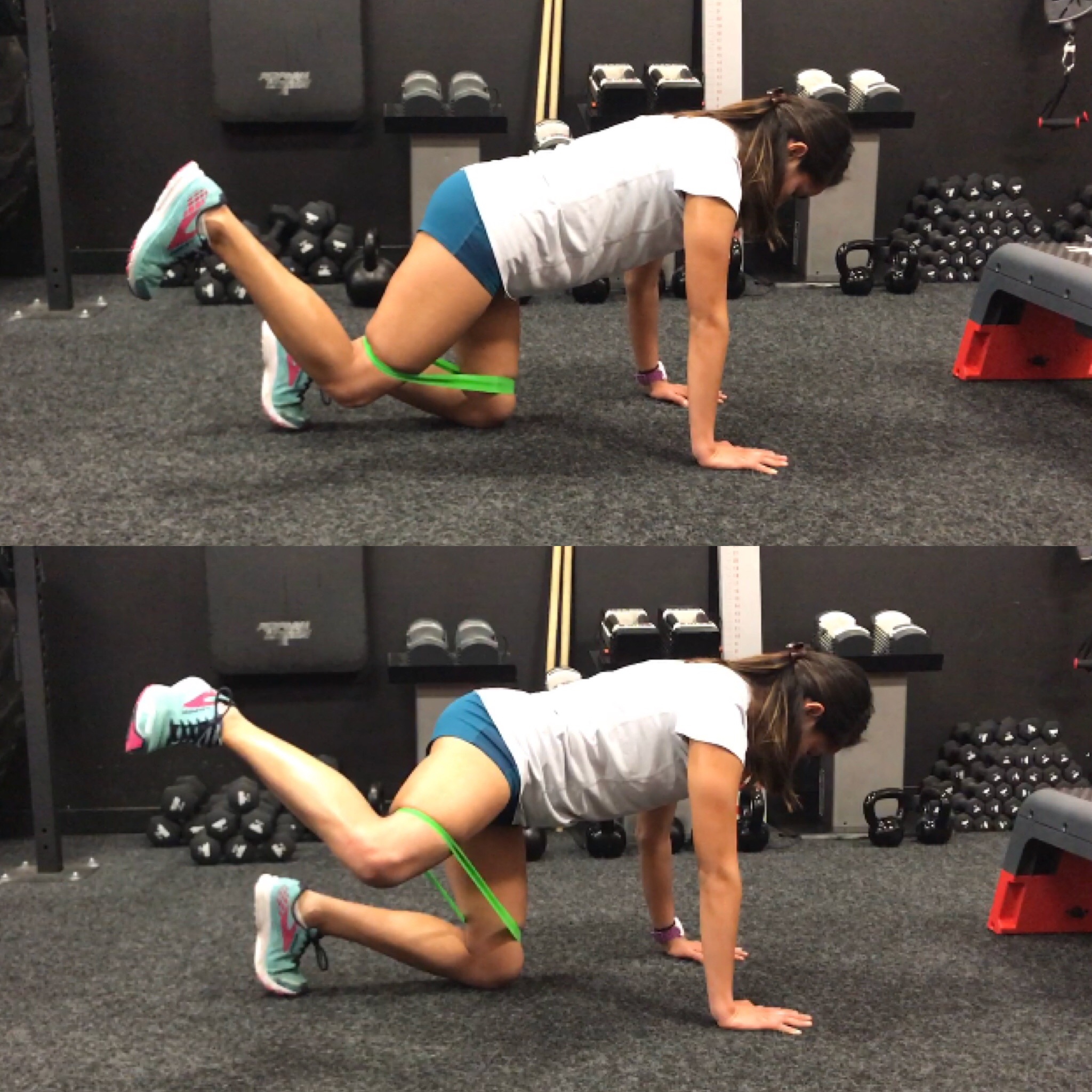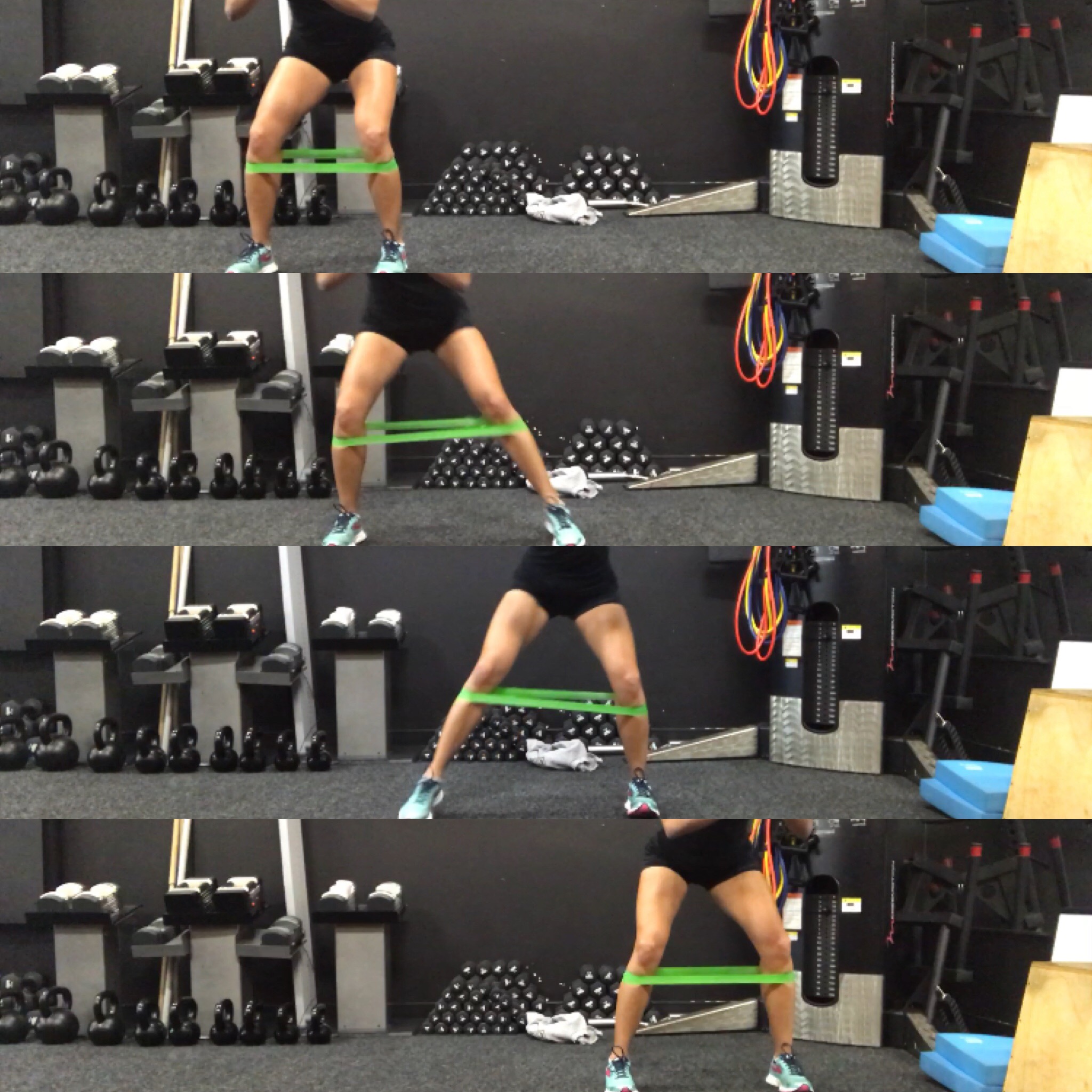Iliotibial Band Syndrome (ITBS) is another overuse injury experienced by some athletes, more so runners and cyclists. According to Ferber et al it is the second leading cause of lateral knee pain in runners (2). It is most commonly described as a friction injury at which the tendon “rubs” over the lateral femoral condyle of the knee creating pain (1) that can present as sharpness, burning, and sometimes swelling.
ITB Anatomy:
The ITB is a broad band of dense connective tissue that originates from the fibers of the gluteus maximus , medius, and tensor fascia late. It runs down the side of the leg and inserts at the lateral aspect of the knee joint; the lateral femoral condyle and infracondylar tubercle of the tibia and fibular head to be exact.
The primary function of the ITB is to help stabilize the hip and knee. The action of the muscle is to help flex the hip (raise the leg up), abduct the hip (bring the leg out to the side), and internally rotate the leg (with the knee straight, turns the leg inward).
This muscle commonly gets overworked, but naturally this will occur because for running you have to flex the hip. The problem then comes down more so to mechanics and whether someone is flexing the hip with excessive leg internal rotation or not.
Symptoms and Causes of ITBS:
As stated previously ITBS is commonly described as sharp and or burning pain on the lateral aspect of the knee pain that is mostly felt during the loading phase of gait when the knee is bent between 20-30 degrees (4). In addition, many runners with ITBS have reported pain exacerbated with downhill running
There have been a handful of studies that have thoroughly investigated the actual REASON to why athletes develop ITBS. We know structurally what tissues become strained and irritated (5) but what is more important is the WHY and HOW it got to that.
A few researchers have investigated how mechanics differ from athlete with and without ITBS syndrome, and a group of them (5,6) looked at mechanics during an running exhaustive state. What they found was that that towards the end of an exhaustive run, runners diagnosed with ITBS demonstrated increase rearfoot (heel) strike which led to increase of internal rotation of the tibia during loading. When this mechanical outcome occurs what end up happening is that the internal rotation of the tibia (lower leg) increases the pull of the distal end of the ITB. Therefore, the researchers speculated that the repetitive internal rotation led to irritation of the ITB tissue. Ferber et al also found in his study that his group of runners with ITBS exhibited “significant hip adduction angle as well and tibial internal rotation (2).” Why is that problematic? Well, when a runners demonstrates an apparent hip drop that leads to the over stretching of the ITB, and if that is persistently happening the ITB is consistently being stretched and strained especially at the site of insertion (the knee). So why does a hip drop happen you may ask.
We have a few muscles that help support the hip aside from the TFl/ITB and those are our glute muscles. The ITB along with the gluteus medius and some fibers of the gluteus maximus play an important role in stabilize our hips during running. Meaning, if they are strong enough and coordination enough they will limit how much our hips drop (adduct). When there is an increase in hip drop (adduction) that leads clinicians to the speculate that there may be a power discrepancy at the hips. Please do not be fooled that just because you run , cycle, work out etc. you assume that you will just naturally get strong in the right places. I have heard clients state “I run, my hips shouldn’t be weak right?” Im sorry to break it to you, but unfortunately thats not the case.
Researchers also understand that and have carried out studies looking at hip strength in runners with ITBS. Frederickson et al led a study comparing hip strength in runners with and without ITBS and concluded that ITBS running group demonstrated increase hip abductor WEAKNESS compared to the control group.
Treatment for ITBS:
Most of the time, in order for this injury to resolve itself, we have to treat the problem not the symptom.
Glute medius weakness leads to hip drop (trendeleburg sign)
As I have presented above, the problem tends NOT to be that your ITB is stiff. As a matter of fact this band is so dense and fibrous it's actually EXTREMELY difficult to stretch it. You will have better luck attempting to stretch the TFL muscle vs foam rolling the whole side of your leg. So please stop bruising your ITBs , its less helpful that you think.
Treatment will be dictated why movement fault found, and as you have read, a majority of the faults associated with ITBS syndrome and tibial internal rotation and increase hip adduction during load. Therefore the hip muscles should be assessed for any weakness and the foot mechanics should be assessed for any weakness leading to foot pronation.
You will fall into one of these categories of impairment if you truly have 100% ITB syndrome.
The answer will stem from strengthening any weakness at the hip and foot and possible changing mechanics if needed.
Icing the area will help with pain and anti-inflammatories may make you feel better, but get after the root of the problem versus just addressing pain.
Beginner Strengthening Exercises for Hip Abductor Weakness
The STAPLES:
- Clams
-Firehydrants
- Sidestepping /Crab Walk
Overpronator?
- Short foot exercises
- Practice giving yourself an arch as often as possible through out the day.
Remember, when it comes to injuries- THERE IS ALWAYS A REASON/CAUSE, you don't just get pain out of nowhere.
- TRAIN SMART to KEEP RUNNING!
JESSICA MENA PT, DPT, CSCS
References:
1. Fairclough J, Hayashi K, Toumi H, Lyons K, Bydder G, Philips T, Bejamin M. The Functional Anatomy of the Iliotibial Band During Flexion and Extension of the Knee: Implications for Understanding Iliotibial Band Syndrome. Journal of Anatomy. 2006 208. P:309-316
2. Ferber R, Noehren B, Hamil J, Davis R. Competitive Female Runners with a History of Iliotibial Band Syndrome Demonstrate Atypical Hip and Knee Kinematics. Journal of Orthopaedic & Sports Physical Therapy. 2010 40:2 pgs: 52-58
3. Fredericson M, Cookingham CL, Chaudhari AM, et al. : Hip abductor weakness in distance runners with iliotibial band syndrome. Clin J Sport Med, 2000, 10: 169–175
4. Hamill J, Miller R, Noehren B, Davis R. A Prospective Study of Iliotibial Band Strain in Runners. Clinical Biomechanics. 2008 23 p. 1018-1025
5. Miller RH, Lowry JL, Meardon SA, GilletteJC. Lower extremity mechanics of iliotibial band syndrome during an exhaustive run. Gait Posture. 2007;26:407-413. http://dx.do
6. Terry GC, Hughston JC, Norwood LA. The Anatomy of the Iliopatellar band and iIiotibial tract. Am J Sports Med. 1986;14:39-45.






